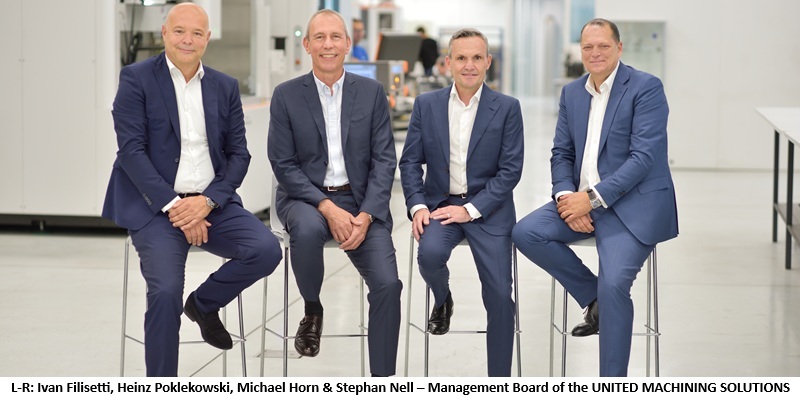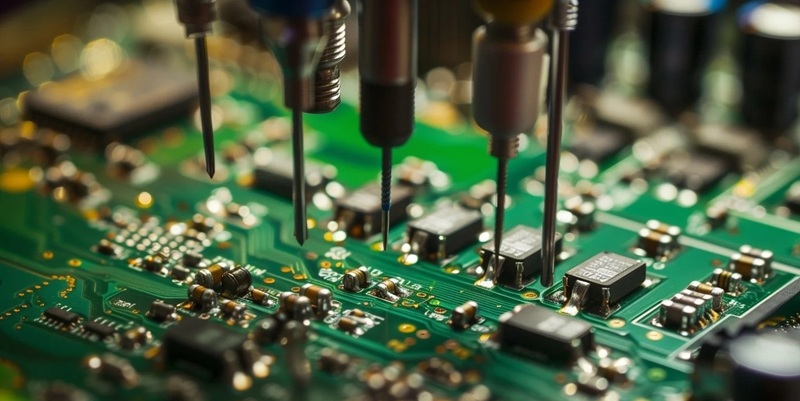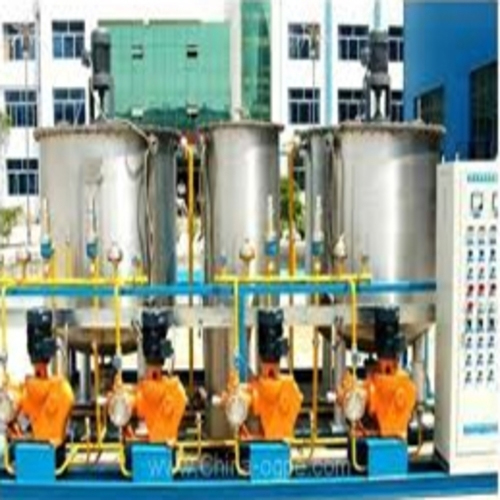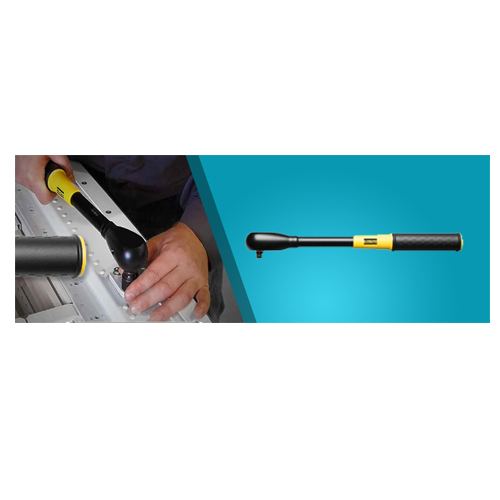Schedule a Call Back
Cryogenic machining - How hot power plant materials can be machined with ice cold precision
 Technical Articles
Technical Articles- May 03,16
Titanium aluminides are materials of the future for power plant construction. They are only around half as heavy as nickel-based alloys, yet are able to withstand high temperatures. The drawback: They are difficult to machine. This is where Walter AG's special tools come in. These have been developed to provide cryogenic cooling directly at the cutting edge. This extends tool life by approximately 70%.

Energy efficiency is at the top of the agenda in all industry sectors. Two approaches that seem particularly promising are raising the temperature in energy converters and reducing weight. We are seeing research laboratories engineer a growing number of innovative materials that meet precisely these requirements. The challenge: Often, these materials are so tough that it is nigh on impossible to machine them with conventional tools and machining concepts. The need to change tools every minute, coupled with the complexity of full jet cooling using emulsion, drives costs skywards.
The machining experts at precision tool manufacturer Walter, based in Tübingen, Germany, identified this trend some years ago now, and set to work on finding solutions to this problem. "Cryogenic machining using carbon dioxide as a coolant is now at a commercially viable stage," says Thomas Schaarschmidt, Director of Business & Application Development at Walter AG. In collaboration with a number of machine manufacturers and the Institut für Produktionstechnik [Institute for Production Engineering – IfP] at the West Saxon University of Applied Sciences of Zwickau (WHZ), Walter has been able to demonstrate that this technology is suitable for use in machining turbine blades for generating energy, titanium structural components for the aerospace industry, and turbochargers for the automotive industry.
Cryogenic machining is ideal for machining titanium aluminide

Titanium aluminide, also known as gamma titanium, is the material of the future for gas turbine blades in the aerospace industry. It comprises intermetallic compounds of titanium and aluminium, developed by the Max Planck Institute for Iron Research in Düsseldorf and the Helmholtz-Zentrum Geesthacht [Helmholtz Centre in Geesthacht]. This material is causing a stir amongst aviation engineers: Although it weighs less than half as much as the nickel-based alloys used to date (with a density of between 3.8 g/cm³ and 8.5 g/cm³), titanium aluminide is able to withstand the high temperatures found in the power plants and is creep-resistant.
In power plant turbine blades, keeping the weight low is particularly important as the increase in centrifugal force relative to weight is quadratic, which is to say that if the weight is halved, the centrifugal forces will be reduced to a quarter of their starting value. This explains why this material is also the preferred material for low-pressure turbines, as they have the largest diameters. The discs to which the blades are attached thus can be designed to be more lightweight. The power plants become more streamlined, and the entire aircraft becomes lighter, needs less fuel and flies more efficiently. Additionally, the reduced fuel consumption results in lower CO2 emissions.
The only drawback is the fact that the material is extremely difficult to machine. “The tool wear rate is ridiculously high – tools last around a minute at most,” relates Lucas Günther, Dipl.-Ing. (FH), Scientific Assistant in the Machining research group at the IfP. Led by Professor Dr sc. techn Michael Schneeweiß, the team’s research focuses on machining turbine blades and developing tools and cutting materials. Cryogenic machining seems to be the perfect solution for machining titanium aluminide. According to Thomas Schaarschmidt, “Abrasive materials and materials that are difficult to cut, such as gamma titanium aluminide and high-strength titanium- and nickel-based alloys, are a key issue in the aerospace industry, and are an ideal application for cryogenic cooling.”
Time is of the essence, as mass production using the material has already begun at turbine-manufacturing facilities. The Airbus 320neo is the first aircraft to be fitted with titanium aluminide turbine blades. Manufacturers are currently having to make do with conventional emulsion and high-pressure cooling technologies. In Lucas Günther's words, “Due to the extensive system equipment required, the cooling lubricant procurement costs, and the costs of care, maintenance and disposal, however, this proves to be very expensive. Not only that, but the use of these technologies is potentially hazardous to human health and harmful to the environment. This stands in contrast to carbon dioxide, which “is relatively simple and cost-effective to deliver where it's needed and then extract again afterwards.” As Thomas Schaarschmidt says, once word got out about CO2-based cryogenic machining in the first few publications, the demand from the aerospace industry, as you would expect, was huge.
Hot and cold

The challenge that engineers face when working with titanium aluminide is this: On the one hand, high temperatures are more conducive to machining, as the material starts to soften a little above 750°C, making it easier to machine. On the other hand, the heat that is generated causes tools to wear extremely quickly, which is why it is so important to ensure that the cutting edge, which is subjected to significant stress, is cooled as directly as possible. Two processes are currently in the running to be used for cryogenic machining in mass production: The first is cooling using liquid nitrogen, and the second is cooling using dry ice (frozen carbon dioxide). The key difference is the temperature at which the two substances exist in their respective states. Liquid nitrogen will be at a temperature of approximately -195°C, whereas CO2 will be at a temperature of -78.5°C.
For Lucas Günther, dry ice is the clear favourite: “Due to the extremely low temperature, nitrogen requires a specially adapted machine concept in order to integrate the cooling system, as well as significant insulation to prevent the machine tool from icing up.” In addition, nitrogen is several times more expensive than the “industrial waste product carbon dioxide, which just needs to be compressed.” Because -195°C is such a low temperature, there is a risk of thermal shock occurring if the wrong amount of coolant is delivered. “This may result in cracking in the tool's cutting edge, whereas CO2 is easier to deal with and its cooling effect is perfectly adequate,” continues Lucas Günther.
To ensure that the dry ice is delivered as near as possible to where it is required on the cutting edge, Walter has worked with a number of technology partners to develop a two-channel delivery system via the spindle and tool. Schaarschmidt says: “One channel conveys the CO2, and the other conveys the lubricant, compressed air or emulsion directly to the cutting edge.” Unlike external delivery systems, this barely cools the workpiece; the temperature required to make machining less difficult is therefore easier to achieve.
The use of a CO2 channel entails certain strict requirements, however. Between the gas cylinder and the tool, in order to maintain a pressure of 57 bar at room temperature, the diameter of the channel must not deviate from a precisely defined value, “otherwise the liquid gas will expand and the channel will ice up immediately,” explains IfP expert Lucas Günther. At both the IfP and at Walter in Tübingen, an Aerosol Master 4000cryolub system from Rother Technologie GmbH & Co KG is used for supplying the CO2 and cooling lubricant. It combines the aerosol dry lubrication technology (ATS) developed by Rother with cryogenic cooling technology. Depending on requirements, it can be used to adjust the supply of liquid CO2 or aerosol as required, meaning that the supply can be adapted according to the component and material. “Controlling the amount of coolant delivered allows us to very precisely control the degree of cooling,” says Thomas Schaarschmidt.
Time-tested tools now with cryogenic cooling
Walter is offering the required tools as custom solutions, tailored to individual needs. "Our customers can order all our time-tested tooling systems, such as Walter BLAXX milling cutters, for cooling with CO2. At the moment, this is a semi-standard option, but there are plans to develop it into a standard option in the future, with prices comparable to those for standard tools. "In the long term, we plan to make these tools available to our customers via our Walter Xpress special tools delivery service," promises Schaarschmidt.
Every bit as important as cutting edge cooling is adopting the right machining strategy: "Together with the IfP, we have accumulated a wealth of experience in order to cope with the change in temperature conditions in the shear plane. For example, long cuts are significantly more effective than broken cuts, so the machining strategy should be adapted to incorporate long, continuous cuts as far as possible." Walter is working on new cutting materials specifically designed for cryogenic machining, which may also bring about improvements.
Industrial mass production cannot take place without taking occupational and industrial safety and process reliability into account. Although the amount of CO2 generated during machining is far below harmful limits, the use of CO2 still requires a safety concept that can be implemented in the event of leaks. "For this reason, we established a working group with Walter and 14 other companies from various sectors. The aim of this working group is to create and document regulations and technical solutions for the safe operation of machine tools with CO2 cooling. This is a crucial prerequisite that must be fulfilled before cryogenic machining can become widespread in industry," says Lucas Günther.
Turning with great potential
When they first started working together, the IfP and Walter examined turbine blade and turbine disc materials that were typically milled: High-alloyed nickel steels. Thomas Schaarschmidt says: "Our findings showed that CO2 cooling increases the metal removal rate by 70% without increasing the tool wear rate."Conversely, by maintaining the same metal removal rate as you had without the CO2 technology, the tool life would be extended accordingly. We were also able to demonstrate this for turbocharger materials for the automotive industry and titanium structural components manufactured from TiAl6V4. "We are currently broadening the scope of our research: We are now systematically investigating which processes and materials CO2 cooling might benefit," says Lucas Günther.
Other than milling, turning currently appears to have the greatest potential. "Even with relatively simple steels such as 42CrMo4, we are already seeing a 25% increase in tool life compared with conventional dry turning," says Schaarschmidt.
Related Stories

UNITED GRINDING and GF Machining merge to form UNITED MACHINING SOLUTIONS
The new entity will be one of the world's largest machine tool manufacturers with $ 1.5 billion in sales.
Read more
Kinetic Communications opens automated controller manufacturing line in Pune
The new advanced automated controller line in Pune leverages Industry 4.0 technology to drive high-speed, precision manufacturing for next-generation smart EV electronics.
Read more
Aimtron Secures Rs 1 bn ODM Deal with Leading US Infrastructure Firm
Aimtron, an Electronics System Design and Manufacturing (ESDM) company, has signed a Rs 975.5 million ODM deal with a US infrastructure leader to develop advanced, transformer-free UPS systems for g..
Read moreRelated Products

Ozone System
Omnicorp Environs & Infratech Co offers a wide range of ozone systems.

SWR ’Slipping’ Wrenches
Reliable
Trade Links offers a wide range of SWR ’slipping’ wrenches.

Gripping Systems – Rgg
Schunk Intec India Pvt Ltd offers a wide range of Gripping Systems – RGG - cleaning
device with shank interface.














